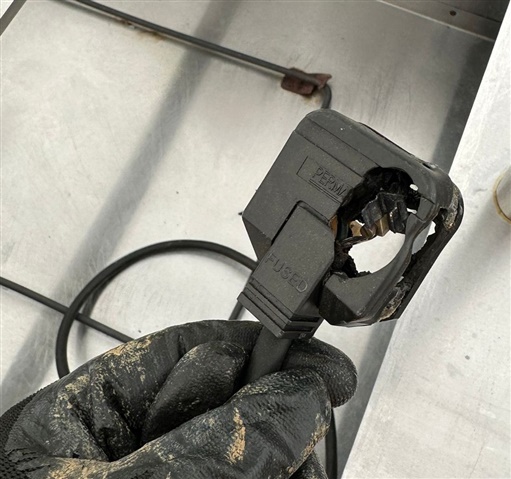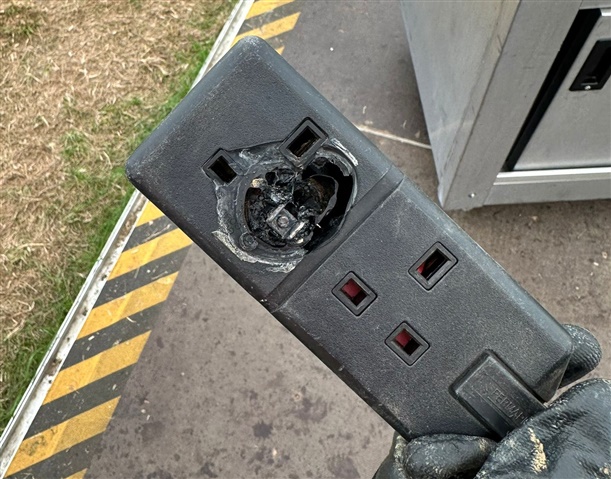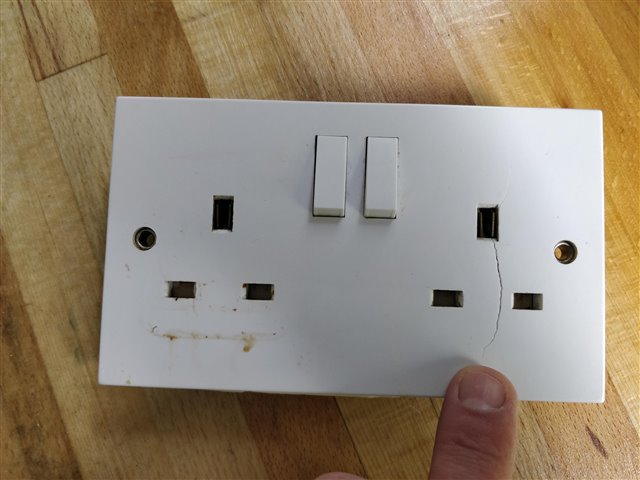what temperature can a bs1363-2 dual gang faceplate withstand?
I see BS1363-2 details the ambient temperature range of -5 to 40degC, but what is the physical allowable contact temperature to the faceplate front? i.e the temperature conducted from a plug top or a pluggable PSU etc.
Asking as I've seen a few examples cracking recently (see picture) all examples are cracking vertically from the bottom to the top centered between the line and neutral up towards the earth socket hole.
Some thoughts are this is due to over tightened screws

Thanks in advance for any help on this one.


